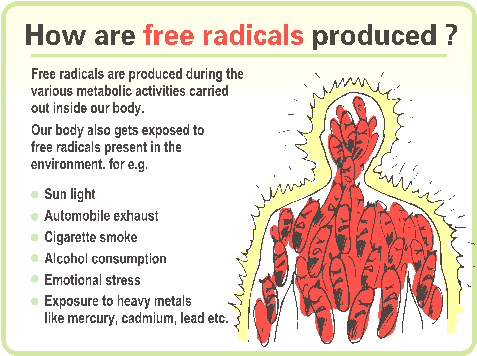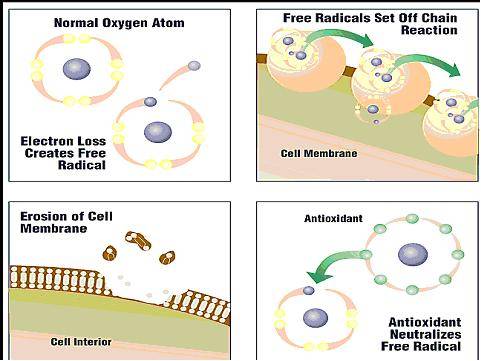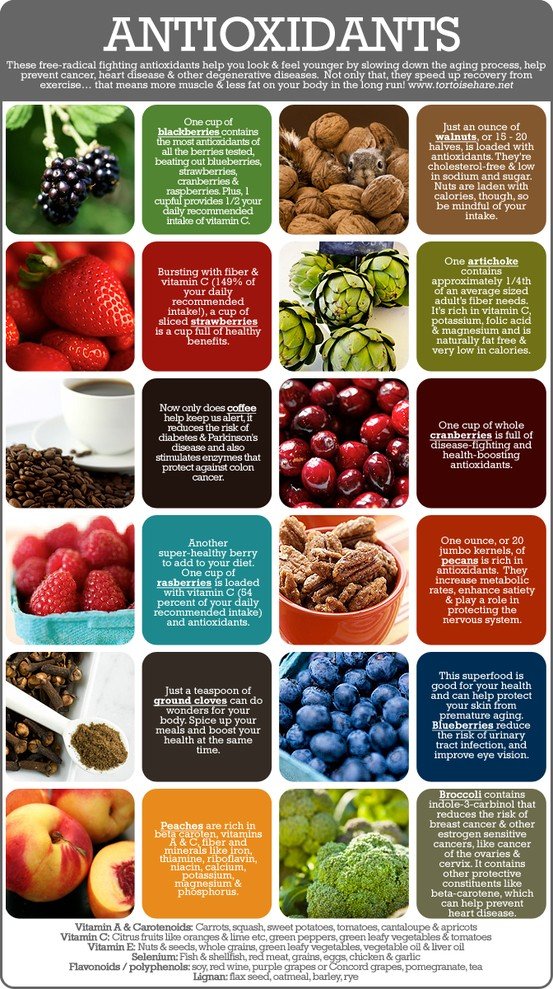The term ‘free radicals’ conjures up images of the hippy and beatnik communities of the late ‘60s and ‘70s in both America and Europe. Sadly, the free radicals racing round our bodies aren’t full of peace and love. Whilst they come in varying shapes, sizes and compositions – they share the same sordid goal of stealing free electrons.
Each cell in our body contains hundreds of thousands of molecules, and our bodies contain 60 trillion cells. That’s a huge bank for free radicals to steal from. Free radicals’ theft of electrons causes changes to cells’ building-blocks creating rogue cells.
What are rogue cells? They are damaged cells, which could just cease to function as they should – for instance, by altering cell membranes to allow more toxins inside. However, free radicals can lead to lipoprotein production, a bad cholesterol that sticks to the walls of your arteries; deaerating vision and other bodily functions; and can even create changes in cell-DNA that can result in cancerous cells.

Contents
How do we defend ourselves, and why are antioxidants the cavalry?
We can’t stop free radicals entering our body – they’re by-products of our digestive system, the sunlight striking our skin and even in the air we breathe and food we eat (especially chemical-ridden processed foods).
What we can do is offer free-radicals electrons that’re easier to grab, but that our bodies won’t miss. Our bodies do naturally provide peace-offerings, but as we age our natural defences weaken and the threat we face from free radicals multiplies.
Quenching free-radicals thirst is the actual definition of an antioxidant: a molecule that donates electrons easier than other cells. You’ll hopefully have heard of various berries being bountiful in antioxidants – they don’t all have the same antioxidants, but they have different molecules that’ll act as electron donors.

What Are Antioxidants?
There are hundreds, if not thousands, of different types of antioxidants. Each one has its own unique characteristics, tempting different types of free radicals with their unique offerings. This means there’s no single antioxidant that’ll satisfy all free radicals hunger for electrons.
The most common and well-known antioxidants come in the form of Vitamin C, Vitamin E, beta-carotene and other similar carotenoids. Some minerals, like selenium and manganese, also have antioxidant properties – along with lesser known antioxidants such as coenzyme Q10, lipoic acid, lutathione, flavonoids, phenols, polyphenols and phytoestrogens.
Studies in the 1990s found people with diets low in antioxidants, namely those with poor intake of fruit and vegetables, were at much greater risk of diseases associated with free radicals. Conversely, studies found people with healthy diets were much less susceptible. Whilst science hasn’t reached the point of proving to treat specific conditions, studies have shown antioxidants can slow the signs of aging and help prevent degenerative diseases including: cancer, cardiovascular disease, cognitive and eyesight impairment and the degeneration of our mind and muscles.

So What Antioxidants Do We Need?
As we’ve mentioned, each antioxidant is suited to satisfying different free radicals. It’s important to have a varied diet, with lots of fruit and vegetables – and minimising or cutting completely processed foods, smoking and alcohol. Why not try tea instead of alcoholic tipple? Below, we’ve listed some of the foods richest in antioxidants:
- Leeks, onions and garlic all contain allium sulphur compounds
- Berries and grapes contain anthocyanins
- Orange fruit and veg like pumpkin, mangoes, apricots, carrots and greens like spinach and lettuce contain beta carotene and Vitamin C
- Seafood, lean meat, nuts and pulses all contain antioxidant minerals like copper, manganese, selenium and zinc
- Green tea, onions, citrus fruits and apples all contain flavonoids
- Cruciferous vegetables such as cabbage, cauliflower and broccoli brim with indoles
- Vitamin E is found in oils, nuts, seeds, whole grains and avocados